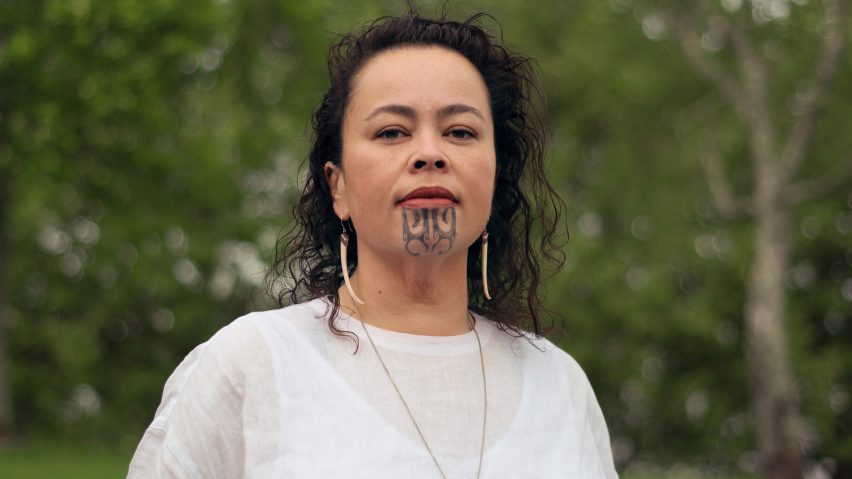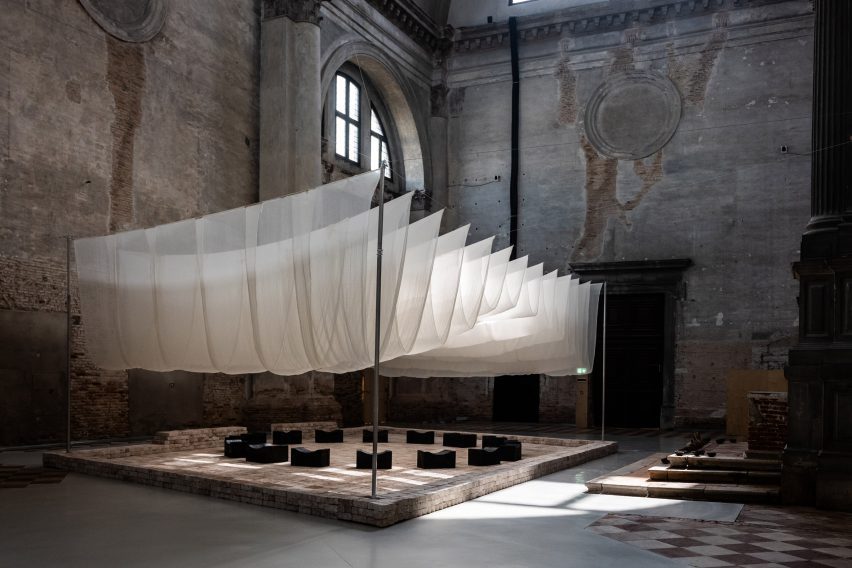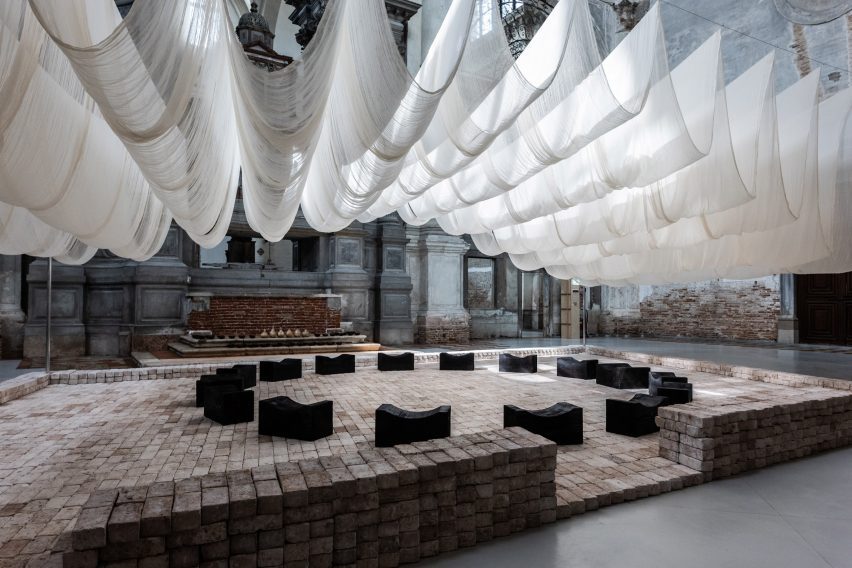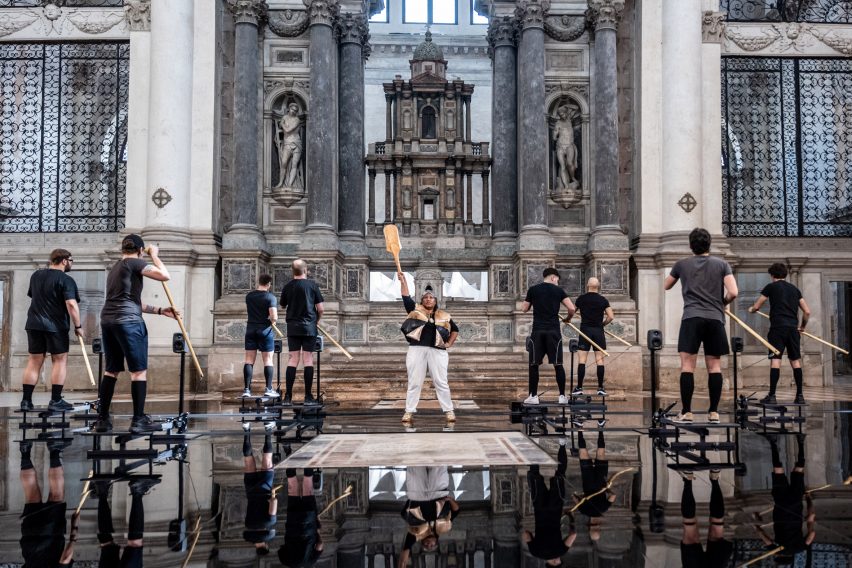
Indigenous design "is the way forward" on sustainability says Elisapeta Heta
Most of New Zealand's built environment has been designed without considering the culture of Māori and Pacific Islander communities, architect Elisapeta Heta tells Dezeen in this interview.
Heta is a principal at New Zealand architecture studio Jasmax, as well as a Māori, Samoan and Tokelauan community advocate and co-founder of Māori design collective at Jasmax, Waka Māia.
She acknowledged the strides that Indigenous creators have made in legitimising Māori and Pacific Island designs from "hut-making" to part of New Zealand's architectural canon over the last 50 years – but says that much of the built environment still does not represent the population.
"It's no wonder that our built environments don't necessarily reflect who we are as people," she told Dezeen. "There's no diversity in it because it's all been designed through the same Western lens."
Finding a "population parity"
There are only 75 Māori architects among New Zealand's roughly 2,000 licensed practitioners and fewer than 10 Pacific Islanders, despite these Indigenous groups making up more than 25 per cent of the country's population.
"The number of Māori and Pacific architects, relative to non-Māori and Pacific architects, doesn't match the population," said Heta.
This compares to an even bigger disparity in Australia, where there are 10 registered Aboriginal architects amongst Australia's more than 5,000 practitioners.
The problem is not unique to architecture, with Heta lamenting the difficulty she experiences in finding Māori collaborators.

"I know one hydraulics engineer that works in the water space and happens to be Māori," she said. "You can't even find a Māori furniture designer."
As Indigenous representation in the industry improves, Heta hopes for multicultural education opportunities for non-Indigenous practitioners so they may serve as allies.
"You need both those that are Indigenous on the ground doing the work, and you need those that aren't Indigenous there to advocate, to learn, to push alongside us," she explained.
At present, the lack of representation leaves the task of educating others to the few Indigenous practitioners.
In what she calls "Māori 101", Heta said she often has to explain or justify her input through impromptu language, culture and protocol lessons, before she has the opportunity to talk about specific designs.
"I've got to do all this other emotional and cultural labor to make the space that I work in more aware of the perspective that I'm coming from," she said. "I don't even mean my architecture firm, but the whole industry."
"Stories will breathe life into pretty much anything"
Heta describes her design practice as coming "from a place of story first", carving out spaces for Māori stories to be told in the physical sphere.
This approach, she explains, is drawn from the Māori practice of wānanga – learning through discussions with other people.
"This is what I would describe as whakapapa – genealogy is sort of how it translates – but it's layering that occurs by all of these connections that you have to everyone around you," she said.
Those stories and layered connections can be seen in Heta's work The Body of Wainuiātea, a multi-sensory installation on display at Ocean Space in Venice until October.

In the installation, visitors take in auditory performances under a filmy white draped awning adjacent to a ceremonial altar space in the historic Chiesa di San Lorenzo.
The Body of Wainuiātea – one half of the Re-Stor(y)ing Oceania exhibition curated by Bougainville-born artist Taloi Havini – tells the story of the goddess of the ocean through songs, poems and stories by a variety of collaborators and thought leaders.
Viewers are invited to bring their history, perspective and know-how to join a larger discussion of environmental protection.
The other half of the exhibition, titled Deep Communion sung in minor (archipelaGO, THIS IS NOT A DRILL), is a resistance to deep-sea mining by Tongan artist Latai Taumoepeau. Together the installations serve as an "SOS" call about the state of the world's oceans.
"The big-picture conversation is that there is an urgent global catastrophe occurring, and this exhibit contributes to that conversation," Heta said.
"We want [viewers] to engage in a conversation with themselves, with their own communities and families, about their impact on the earth and ultimately on the ocean."
Indigenous designers "the ones to help" with climate change
Rather than designing with sustainability in mind, Heta said that Indigenous practitioners often see resources as living, breathing entities.
The Māori concept of guardianship, known as kaitiakitanga, holds that humans exist alongside the earth and live harmoniously with the environment – and rely on natural organisms to indicate the health of the environment.
In 2017, the Whanganui River became the world's first river to have legal personhood because it is considered the Kaitiaki, or guardian ancestor, of the Whanganui Iwi, a collection of Māori tribes. Therefore, water from the river used in other ways, such as buildings, would retain the life force of the Whanganui.

"[Kaitiakitanga] can mean that we are considering, for example, the whole of life of the way water is treated on a site through a building, beyond the life of a building, out to the streams, out to the waterways onto the streets," Heta explained.
For Heta, seeing the earth's elements as living things rather than expendable resources may be a potential solution for addressing climate change.
"Because we're at such a crisis point with climate change anyway, I think Indigenous designers are probably the ones to help," Heta said. "Our thinking is the way forward."
"Māori culture is not just about the way a space looks, it's about the way it feels," she said. "That gets reframed in the Western context as regenerative design or sustainability, but for us, it's our way of living."
The portrait of Heta is courtesy of Jasmax.
Dezeen In Depth
If you enjoy reading Dezeen's interviews, opinions and features, subscribe to Dezeen In Depth. Sent on the last Friday of each month, this newsletter provides a single place to read about the design and architecture stories behind the headlines.